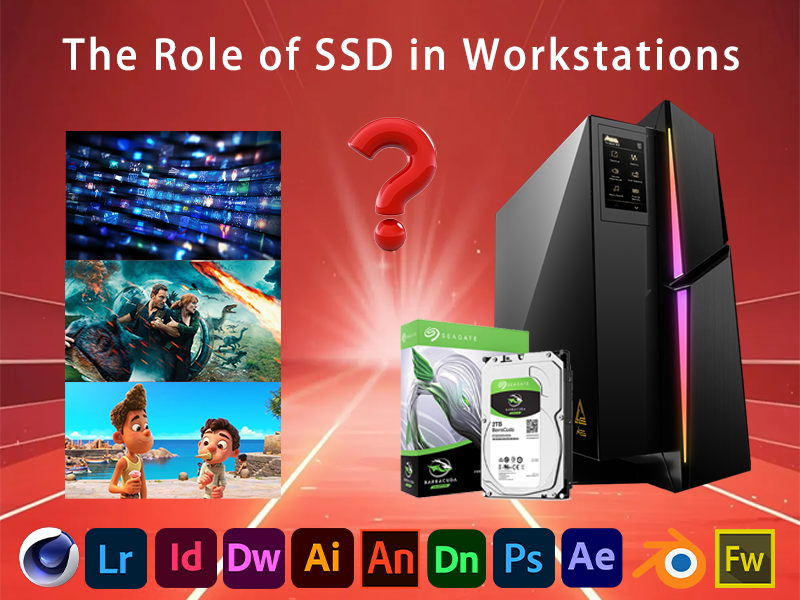In today's world, every modern workstation comes equipped with Solid State Drives (SSDs). They are a vital part of any work-set as they are able to access data much faster, overall being more reliable, and consuming less power as compared to traditional hard drives.
Speed and Performance
One big plus of SSDs is how fast they work compared to traditional hard drives. Regular hard drives spin around to find data, while SSDs use flash memory instead. The difference matters when it comes to getting things done quickly. Laptops and desktops start up faster, applications load in seconds rather than minutes, and accessing documents or other files happens almost instantly. People working with heavy software really notice this boost. Think about folks running large databases, editing videos, working on complex 3D models, or managing huge amounts of data day after day. For these professionals, switching to SSD storage isn't just nice to have it's practically essential for keeping workflow smooth and productive.
Reliability and Durability
Modern laptops and computers rely on wireless subsystems like Bluetooth, though signal strength tends to drop off after about 30 feet or so. These systems offer more than just convenience they also boost mobility significantly. No longer are we stuck with bulky machines that take up entire desks. Today's laptops are much lighter than their predecessors, allowing for truly portable computing. The addition of standalone thermal pads has made a noticeable difference in user comfort during extended sessions. As global temperatures continue to rise, this matters even more since overheating becomes less of an issue when using devices at awkward angles. CMOS batteries now last considerably longer without failing prematurely, which makes our gadgets far more dependable over time. And let's not forget about order deduplication technology either this innovation cuts down on expenses substantially by eliminating redundant purchases across large organizations.
Energy Efficiency
When looking at energy efficiency, SSDs definitely beat out old school storage options these days. They just don't guzzle power like their predecessors did, so companies actually save money on their electric bills while cutting down those pesky carbon emissions too. For businesses aiming to go green without breaking the bank, this makes a world of difference. Plus, computers running on SSDs stay much cooler during operation and run almost silently compared to noisy HDDs. Anyone who has worked near rattling servers knows what a relief it is to finally get some peace and quiet in the office.
Cost Considerations
Back in the day, SSDs used to cost way more per gigabyte compared to traditional HDDs, but things have changed quite a bit lately. The gap between their prices is getting smaller all the time. With better manufacturing techniques and tech improvements happening fast, we're seeing SSDs become affordable even for folks working with tight budgets these days. Companies looking ahead know what's coming next too. While the upfront cost might still sting a little, those who invest now reap rewards down the road through faster operations and fewer system crashes. That kind of reliability pays off big time when business continuity matters most.
Technological Innovations in Future-Stored Data Processing
More workers these days are starting to realize what makes SSDs so good for their jobs, which explains why they're showing up on more desks around offices. The tech world is cooking up new stuff too, like NVMe drives that promise faster speeds than ever before. These newer models work great with modern computers and workstations where people need things to happen quickly. With all the data we deal with now and how important saving time has become, it seems pretty clear that SSDs aren't just here to stay but actually shaping where computer tech is headed next. Companies that haven't made the switch yet might find themselves falling behind competitors who already rely on solid state storage solutions.
Ultimately, SSD technology has emerged alongside other upgrades that require modern workstations beyond just development peripheral devices. Maximizing energy efficiency with devices such as batteries while providing reliability during performing tasks makes workstations multifunctional, which eases numerous daily tasks professionals face.




